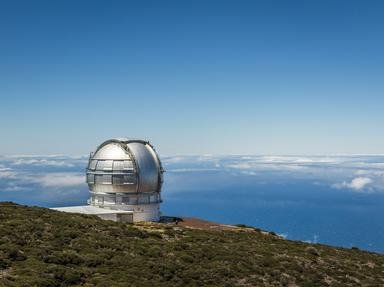Quiz Answer Key and Fun Facts
1. Who managed to compile the first known star atlas?
2. Who made the first accurate estimate of the size of the Milky Way galaxy?
3. Who wrote the Theory of Relativity?
4. Who discovered the fourth closest star to the Sun?
5. Who is the 200-inch telescope on Mt. Palomar named after?
6. Who discovered pulsars?
7. Who was the first female astronomer to be voted in the American Academy of Arts and Sciences?
8. Who established the two different classes of stars?
9. Who made the first photograph of a stellar spectrum?
10. Who came up with the term 'Big Bang'?
Source: Author
almach
This quiz was reviewed by FunTrivia editor
Lanni before going online.
Any errors found in FunTrivia content are routinely corrected through our feedback system.

